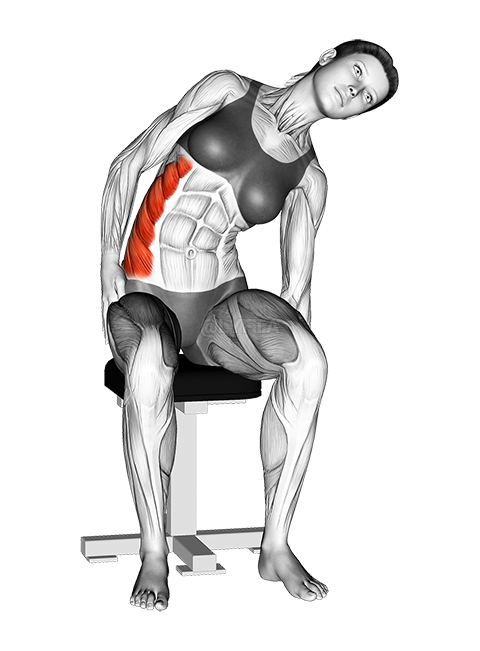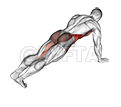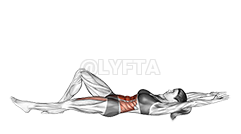
Hip Raise
Exercise Profile
Related Exercises:
Introduction to the Hip Raise
The Hip Raise is a versatile exercise designed to strengthen the glutes, hamstrings, and core, contributing to improved balance, posture, and overall body strength. It's suitable for individuals of all fitness levels, from beginners to advanced athletes, as it can be easily modified to match one's abilities. People may choose to incorporate Hip Raises into their routine to enhance lower body strength, boost athletic performance, or aid in injury prevention.
Performing the: A Step-by-Step Tutorial Hip Raise
- Place your arms at your sides, palms facing down.
- Slowly lift your hips off the floor by pushing through your feet, while keeping your back straight, until your knees, hips and shoulders form a straight line.
- Pause at the top, squeezing your glutes for a second or two.
- Slowly lower your hips back down to the starting position to complete one repetition.
Tips for Performing Hip Raise
- **Engage Your Core**: Engage your core muscles before you begin the lift. This means tightening your abdominal muscles as if you were preparing to take a punch. This helps to stabilize your body and protect your lower back during the exercise.
- **Avoid Overextending**: A common mistake is overextending the hips at the top of the movement. You should lift your hips until your body forms a straight line from your shoulders to your knees. Overextension can put unnecessary strain on your lower back.
- **Squeeze Your Glutes**: To get the most out of the exercise, focus on squeezing your glutes as you lift your hips. This will help to fully engage these muscles and maximize the benefits of the exercise.
- **Control
Hip Raise FAQs
Can beginners do the Hip Raise?
Yes, beginners can definitely do the Hip Raise exercise. It's a simple and effective exercise to strengthen the glutes, lower back, and abdominal muscles. However, like any other exercise, it's important to start with a low intensity and gradually increase as your strength and endurance improve. Also, maintaining the correct form is crucial to prevent any injuries.
What are common variations of the Hip Raise?
- Weighted Hip Raise: This variation involves holding a weight, such as a barbell or dumbbell, across your hips as you perform the exercise, adding resistance and increasing the intensity.
- Stability Ball Hip Raise: This variation involves placing your feet on a stability ball while you lift your hips, increasing the challenge to your core and balance.
- Banded Hip Raise: This variation involves looping a resistance band around your thighs just above your knees, providing additional resistance as you lift your hips.
- Hip Raise with Feet on Bench: This variation involves placing your feet on a bench or step, increasing the range of motion and intensity of the exercise.
What are good complementing exercises for the Hip Raise?
- Deadlift: Deadlifts are a great complement to Hip Raises because they target the posterior chain muscles, including the glutes and hamstrings, but also work the back and core, promoting better posture and functional strength.
- Squats: Squats complement Hip Raises by working the same primary muscles - the glutes and hamstrings - but also engaging the quadriceps and calves, leading to more balanced lower body development.
Related keywords for Hip Raise
- Bodyweight hip raise exercise
- Waist workout at home
- Hip raise fitness routine
- No-equipment waist exercises
- Bodyweight exercise for waistline
- Strengthening waist with hip raises
- Home workout for waist shaping
- Hip raise bodyweight workout
- Waist-targeting exercises
- Bodyweight hip raise for waist toning










